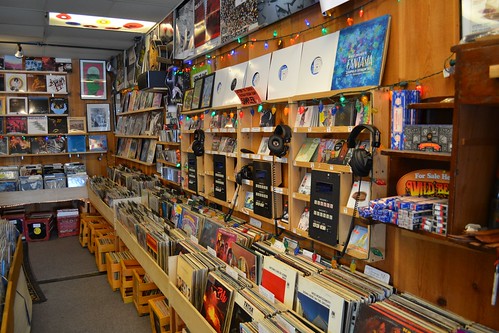Every time there’s a new technology, there are those that proclaim the death of the old. It’s rarely true, if at all.
"According to the Recording Industry Association of America, vinyl album sales grew 12.9% in dollar terms to $224 million and 6% in unit terms to 8.6 million in the first half of 2019, compared with the first six months of 2018. Compact disc sales held steady, and if the current dynamic holds, old-fashioned records will overtake CDs soon, offsetting the decline in other physical music sales. Streaming revenue grew faster for obvious reasons: It’s cheaper and more convenient. But people are clearly not about to give up a technology that hasn’t changed much since the 1960s.
In 2018, hardcover book sales in the U.S. increased by 6.9%, paperback sales went up 1.1% and eBook sales dropped 3.6%. The number of print magazine titles published in the U.S. rose to 7,218 from 7,176, according to the Association of Magazine Media. That’s more magazines than the U.S. had in 2009. For all the havoc the digital revolution is wreaking on newsrooms, people are still starting new titles – and 96% of the magazine industry’s subscription revenue still came from the print editions, with digital providing the rest.
One explanation could be that, as Ozgun Atasoy from the University of Basel and Carey Morewedge from Boston University wrote in a paper based on a series of experiments, people are more willing to buy physical goods than equivalent digital ones, and they’re likely to pay a higher price for them. Offered an easy choice, people would rather have a vinyl LP than its digital image in the cloud somewhere; it’s just that the choice isn’t there most of the time. Atasoy and Morewedge wrote that the effect is mostly explained by ‘psychological ownership’: It’s hard for people to feel they own something they can’t physically touch.
They wrote, however, that other, unidentified factors were also at play, since psychological ownership didn’t fully explain the difference in people’s willingness to pay for the two kinds of products. I think Michael Palm from University of North Carolina-Chapel Hill put a finger on those factors in a paper published earlier this year. He suggested that physical vs. digital, or new vs. old, could be a less relevant differentiation point than corporate culture vs. independent culture.
The record industry got rid of vinyl fabrication when CDs appeared. Big store chains stopped selling LPs. But small producers and record stores that also function as community centers have kept the culture and the format alive. Now, the big companies see a commercial potential again – but they’re ordering vinyl records from independent producers, who can’t always keep up with the orders, and distributing to small stores, not just to giant chains like Best Buy, which are also stocking vinyl records again.
‘To combat the corporate incursion into vinyl markets, some independent labels are vertically integrating and beginning to manufacture as well as distribute and sell their own records,’ Palm wrote. ‘The stakes of vinyl’s future involve the viability of an independent supply chain for popular music, and these stakes are raised in a media landscape dominated by online access to content controlled by corporate gatekeepers.’"
(Via Vinyl, Books and Glossy Magazines Will Never Go Away - Bloomberg.)


No comments:
Post a Comment